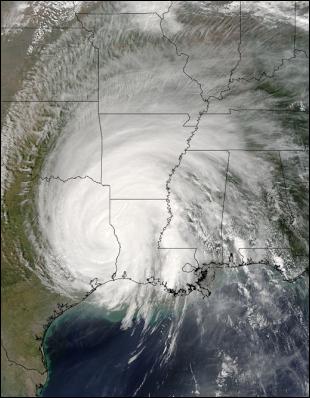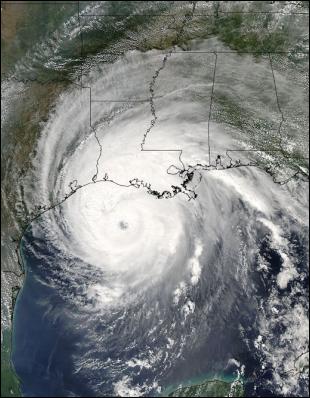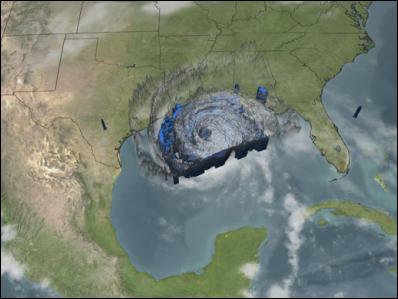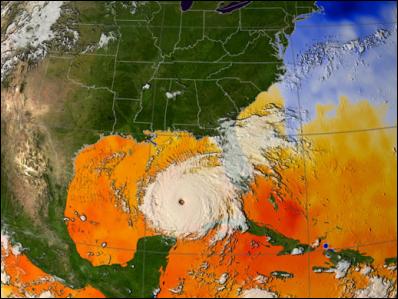NASA Satellite Images & Detail Of Hurricane Rita
NASA Satellite Images & Detail Of Hurricane Rita

Click for big version
The MODIS instrument on the Terra satellite captured this image of Hurricane Rita as it made landfall on the Gulf Coast on September 24, 2005. Credit: NASA image courtesy Jeff Schmaltz, from the MODIS Rapid Response Team at NASA GSFC

Click for big version
The MODIS instrument on the Aqua satellite captured this image of Hurricane Rita as it started making landfall on the Gulf Coast on September 23, 2005. Credit: NASA image courtesy Jeff Schmaltz, from the MODIS Rapid Response Team at NASA GSFC

Click for big version
NASA's Tropical Rainfall Measuring Mission (TRMM) spacecraft observed this view of Hurricane Rita on September 23, 2005 at 12:52 pm EDT. At this time the storm was a category 4 hurricane with a minimum pressure of 924 mb, and sustained winds of 120 knots. The cloud cover is taken by TRMM's Visible and Infrared Scanner(VIRS) and the GOES spacecraft. The rain structure is taken by TRMM's Tropical Microwave Imager (TMI). It looks underneath of the storm's clouds to reveal the underlying rain structure. Blue represents areas with at least 0.25 inches of rain per hour. Green shows at least 0.5 inches of rain per hour. Yellow is at least 1.0 inches of rain and red is at least 2.0 inches of rain per hour. Click on image to view animation (no audio - 9.7 b) Credit: NASA

Click for big version
This visualization shows the sea surface temperature from September 17 to September 21 when temperatures in the Gulf of Mexico remained one to two degrees warmer than the 82 degree minimum needed to sustain a hurricane. Every area in yellow, orange or red represents 82 degrees F or above. Temperature data is from the AMSR-E instrument on the Aqua satellite, while the cloud images of Hurricane Rita were taken by the Imager on the GOES-12 satellite. Click on image above to view animation (no audio - 3.7 Mb.) Credit: NASA


 UN News: 10,000 People Feared Buried Under The Rubble In Gaza
UN News: 10,000 People Feared Buried Under The Rubble In Gaza Save The Children: Heat-stricken Bangladesh Extends School Closures
Save The Children: Heat-stricken Bangladesh Extends School Closures Hayden Stephens and Associates: Record Class Action Settlement Gives Hope To 50,000 Australian Junior Doctors
Hayden Stephens and Associates: Record Class Action Settlement Gives Hope To 50,000 Australian Junior Doctors UN News: Healing Page By Page In Earthquake-affected Türkiye
UN News: Healing Page By Page In Earthquake-affected Türkiye Save The Children: Rate Of Attacks On Healthcare in Gaza Higher Than In Any Other Conflict Since 2018
Save The Children: Rate Of Attacks On Healthcare in Gaza Higher Than In Any Other Conflict Since 2018 UN News: Green Light For New Cholera Vaccine, Ukraine Attacks Condemned, Action Against Racism
UN News: Green Light For New Cholera Vaccine, Ukraine Attacks Condemned, Action Against Racism